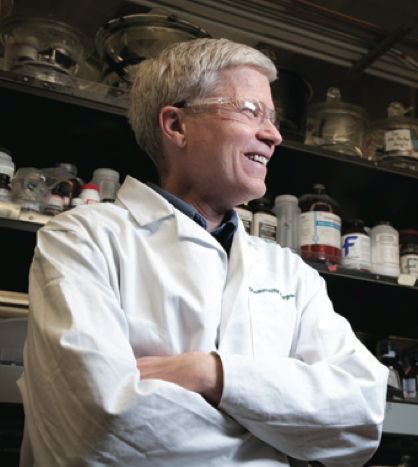Watch Professor Shannon Boettcher as he explains his electrochemical research and sustainable energy goals.
Read more about Prof. Boettcher’s research and Blavatnik Award
Watch Professor Shannon Boettcher as he explains his electrochemical research and sustainable energy goals.
Read more about Prof. Boettcher’s research and Blavatnik Award
Lundquist faculty members and MBA students partnered with the Knight Campus and others to reimagine the car seat.
The result: WAYB’s Pico car seat.
 Among the partners was Aurora Ginzburg, a graduate student in the Hutchison lab, who served as the liaison between WAYB and the students as they sought to integrate greener, more sustainable materials into their new design.
Among the partners was Aurora Ginzburg, a graduate student in the Hutchison lab, who served as the liaison between WAYB and the students as they sought to integrate greener, more sustainable materials into their new design.
Read more in the article below from the Fall 2019 edition of UO Business magazine.
 Loading...
Loading...
Sustainable Invention Immersion Week is a free, co-curricular program where students from different majors come together for one week to build a sustainable business model. Students will be able to apply life cycle analysis, design thinking and business model development to a wide range of sustainability challenges. Students will come away from the experience with an ability to apply these skills in many individual and team-based settings (e.g. portfolio and resume building, creative collaboration, startup development). Sustainable Invention alumni have gone on to launch startups as well as receive significant industry-focused grants.
The collaborative program is free and open to all students, from all majors (including undergraduates and graduate students). The program will provide all project materials along with two meals a day over the week-long boot camp.
Participants will be challenged to design a new solution to address a need that eliminates or significantly reduces the problems associated with materials. We will explore strategies to get optimal effect with minimum input. Examples include eliminating the need for a lawn mower by inventing grass that only grows 2 inches and does not need to be mowed, or eliminating a window washing system by inventing self-cleaning glass. These kinds of innovations disrupt existing solutions requiring us to think in different ways. The solution should be economically viable, socially acceptable and have a net positive environmental impact compared to existing products/processes.
Sustainable Invention Immersion Week is sponsored by the UO’s Lundquist Center for Entrepreneurship and the Department of Chemistry and Biochemistry with partners from the School of Journalism and Communication, the Department of Product Design, the Department of Biology and the Center for Sustainable Business Practices.
UO Chemistry and Biochemistry’s Julie Haack, a faculty member specializing in green chemistry, helped them refine their plastic recipe!
UO Chemistry and Biochemistry faculty Julie Haack and Jim Hutchison will participate in a panel discussion titled “Disruptive Strategies for Product Innovation” on May 10, 2018 at the Oxford Hotel in Bend, Oregon.
The participating educators, scientists, and engineers who will seek to inspire the audience to consider new strategies for product design at the nexus of disruptive innovation, materials selection, and systems thinking that maximize product performance and minimize impacts.
Read more at bit.ly/2rwRk81
UO Chemist David Tyler helps a mom consider the sustainability of her daughter’s dolls for an article in Atlantic.


UO Chemistry and Biochemistry faculty David Tyler discusses the sustainability and lifecycle impacts of paper and cotton bags versus plastic in an article on the vote to extend California’s state-wide plastic bag ban.
Read more at http://bit.ly/1JnfXY1
Proposals for a faculty clusters in “Chemistry and Physics to Amplify Excellence in Energy and Sustainable Materials” by Profs. Jim Hutchison and Andy Marcus, and for “Life at Nanoscale” by Profs. Brad Nolen and Ken Prehoda, are among the 10 proposals chosen as highest priority for hiring UO faculty.
Read more in AroundTheO and the Register Guard
“University of Oregon chemist Jim Hutchison tackles both the definition and its application in the production of metals in a newly produced educational video for the Materials Research Society.”
More at AroundTheO